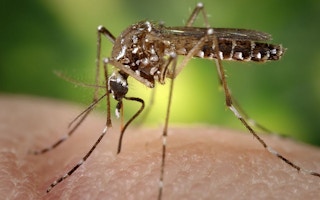Seventeen new cases of locally transmitted Zika virus infection in Singapore were confirmed on 6 September by the country’s Ministry of Health (MOH), raising the tally to 275 cases since the outbreak on 27 August.
The sudden spike in one of the cleanest countries in the ASEAN region has raised concerns of possible spread to its densely populated neighbours although local transmission of Zika by the Aedes aegypti mosquito has been reported in Indonesia and Thailand.
According to a new modelling study published in The Lancet Infectious Diseases, China, Indonesia, the Philippines and Vietnam, as well as Bangladesh, India, Nigeria and Pakistan, are expected to be at greatest risk of Zika virus transmission.
“Zika may spread to other areas of South-East Asia but to what level is difficult to predict. Warmer climates lead to more mosquitoes.
Wherever there is a vector, there is a possibility that it might be introduced into that geographical area,” says Irani Thevarajan, an infectious diseases physician based at the Doherty Institute for Infection and Immunity in Melbourne.
Thevarajan tells SciDev.Net that Zika transmission actually has very little to do with cleanliness and much more to do with the presence of vectors and breeding sites for the mosquitoes. “Local transmission in any area is related to the presence of mosquitoes that can transmit the virus, which are present in Singapore and are the same ones that can transmit the dengue virus.”
“
Zika may spread to other areas of South-East Asia but to what level is difficult to predict. Warmer climates lead to more mosquitoes.
Irani Thevarajan, infectious diseases specialist, Doherty Institute for Infection and Immunity, Melbourne
So why is it spreading so fast in the city state with a population of only 5.7 million?
Thevarajan says that while Zika has been around in Asia, it’s unclear why there has not been more outbreaks earlier and why the sudden outbreak now. “Perhaps, there is a combination of factors such as more heightened testing of Zika and introduction from travellers to Singapore. It’s also possible that something might have changed in the virus for it to become more infective.”
According to a MOH statement, “There is a potential new cluster involving one previously reported case and a new case [on 3 September]. The other six cases have no known links to any existing cluster.” An analysis of two cases found that they had likely evolved from a strain of Zika that was already circulating in South-East Asia.
Last February, the WHO announced a global state of emergency concerning the Zika virus, predicting as many as four million cases by year end. It has commended Singapore as a global role model in how the city-state has managed the situation.
The MOH will no longer require suspect Zika cases to be isolated while waiting for test results. The MOH will also extend subsidies for the Zika test to all Singaporeans with Zika symptoms. The National Environment Agency is continuing with vector control operations and outreach efforts.
“Good surveillance is the first step towards having an appropriate response. There is no vaccine for Zika so a lot of the control measures would focus on vector control elimination of breeding areas, use of insecticides and trying to interrupt the breeding cycle,” Thevarajan says.
“Also [important] is personal protective behaviour by individuals, which is twofold. To protect oneself from being bitten by mosquitoes by using repellents and if one is infected by Zika, to protect oneself from being bitten again by a mosquito as that mosquito in turn could get infected and spread the virus,” she adds.
This piece was produced by SciDev.Net’s South-East Asia & Pacific desk and was republished with permission.










